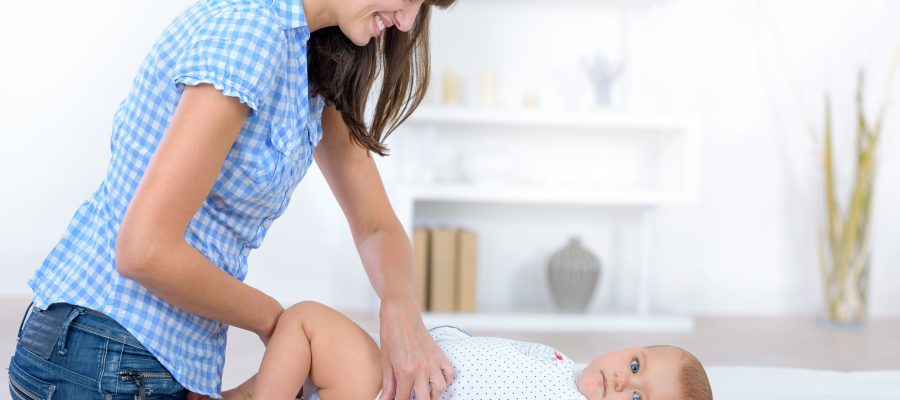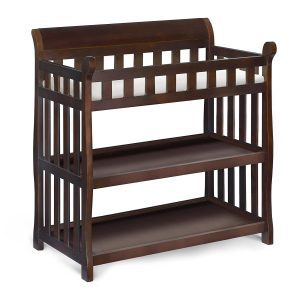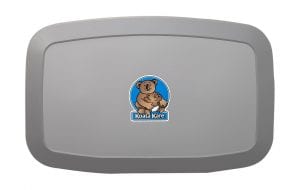The Best Diaper Changing Stations
We looked at the top 13 At-Home Changing Stations and dug through the reviews from 16 of the most popular review sites including and more. The result is a ranking of the best At-Home Changing Stations.

Our Review Process
Don't Waste Your Money is focused on helping you make the best purchasing decision. Our team of experts spends hundreds of hours analyzing, testing, and researching products so you don't have to. Learn more.
Our Picks For The Top At-Home Changing Stations
- 1. EGREE Back Ache Reducing Space Saving At-Home Changing Station
- 2. Skip Hop Cushioned Toy-Bar At-Home Changing Station
- 3. PooPoose Contoured Swaddling At-Home Changing Station
- 4. Delta Children Eclipse Wood At-Home Changing Station
- 5. Continental Commercial Baby At-Home Changing Station
- 6. Costzon Waterproof At-Home Baby Changing Station
- 7. INFANS Wide Folding At-Home Changing Station
- 8. Munchkin Easy Store Diaper At-Home Changing Station
- 9. CozyBee Camo On-The-Go & At-Home Changing Station
- 10. Mikilife Compact At-Home Changing Station Pad
- 11. Koala Kare Plastic At Home Changing Station
- 12. Comfy Cubs Travel Purse At Home Changing Station
- 13. ECR4Kids Concave Adjustable At Home Changing Station
Spending the day visiting friends and family has never been more easy than with this portable changing station. It folds up flat for easy storage and transport and comes with a handy set of bottom wheels. A bottom shelf and side pocket provide plenty of space for all of your diapering supplies.
Great for Grandma's HouseThanks to the adjustable height of this portable at-home changing station, you won't have to worry about developing a backache.
Thanks to the non-skid base on this at-home changing station, you'll be able to use it on any tabletop. It's made using a comfortable foam and features a buckle for safety. You'll also be able to quickly clean the pad with a little dish soap and water.
Keeps Your Kiddo EntertainedThe cute little cloud and sunshine mobile that hangs over this at-home changing station will keep your baby entertained during diaper changes.
In the center of this at-home changing station mat is a strap that not only keeps baby safe, but also produces a calming effect. The mat can be used on any surface, allowing you to change baby where it's most convenient. The cover is easily wipeable, but can also be removed and tossed in your washing machine if needed.
Keeps Your Little One CalmThis at-home changing station is constructed using 100% recyclable soft foam, so you can feel good about your purchase.
In addition to having a solid wood construction, this durable at-home changing station also features a water-resistant finish. A set of safety rails and a safety strap protect baby from falling off the table. Underneath the table are two shelves for storing diapering supplies and extra outfits.
Multiple Finishes AvailableYou'll find this at-home changing station comes in a choice of black cherry espresso, dark chocolate, white, gray and black finishes.
Buying Guide
A diaper-changing table is a great addition to any home nursery, but you don’t just need a changing area while you’re at home. There are many fold-up changing mats that prepare you for a dirty diaper whether you’re in your own living room or trapped on an airplane. Once you have a portable changing pad, you’ll never find yourself scrambling for a way to change a dirty diaper again.
For nurseries, you have a variety of options, but the most stable and comfortable will likely be a fold-down table that mounts to a wall. You’ll need to do some work to attach these, but once they’re in place, you’ll be set up for months of changing diapers. In fact, if you plan to have another baby within a couple of years, you may want to leave your changing table mounted on the wall to avoid having to restart the shopping process.
Away from home, you’ll need a changing pad with a portable design. Portability is essential with this type of changing pad. You’ll need to be able to wrap it up and slip it into a diaper bag or stroller, so consider that while you’re shopping. That said, you may also want to make sure you aren’t sacrificing convenience and comfort for portability.
In addition to ensuring a changing area is well padded, especially where your baby’s head rests, you should also consider features like pockets. These come in handy for storing wipes and other items you might need during changes. Some portable mats also have a barrier to keep baby’s hands from roaming, possibly picking up soiled diapers or wipes.
If you opt for an in-home charging table that mounts to the wall, keep sturdiness in mind. You’ll have to attach it and, when you do, you’ll want to make sure it will keep your baby safe and secure. Some mounted charging tables also come with plastic liners that you can put down to keep the table clean while you’re working. Then you simply roll everything up in the plastic liner and toss it once you’re finished with the diaper change.
Why we recommend these at-home changing stations?
Products Considered
Products Analyzed
Expert Reviews Included
User Opinions Analyzed
Our experts reviewed the top 13 At-Home Changing Stations and also dug through the reviews from 16 of the most popular review sites including and more. The result is a ranking of the best of the best At-Home Changing Stations.
DWYM is your trusted roduct review source. Our team reviews thousands of product reviews from the trusted top experts and combines them into one easy-to-understand score. Learn more.
What to Look For
- If you’ve ever changed a diaper, you know it can be messy business. It only complicates things that babies usually don’t stay completely still while you’re cleaning them. Portable changing mats that come with a barrier can come in handy since they keep baby’s upper half safely isolated from the cleanup that’s happening below.
- With portable changing mats, rolling over can be a problem. Keep that in mind. At-home changing tables have straps to keep them safely in place, but you’ll have to always keep one hand on baby if you’re using a mat, especially if you’re changing on a table or counter.
- Today’s parents are increasingly concerned with toxins. Changing mats can have chemicals like BPA, so look for a mat that promises to be toxin-free.
- One of the best things about changing tables is that today’s models can be built using bacteria-resistant materials, keeping germs at a minimum.
- Some portable changing mats come with padding in the area where your baby’s head will be. This acts as a sort of pillow, giving your little one comfort during the time you’re changing and cleaning up.
- If you choose a portable changing mat, pay close attention to the way they fold up. There are many that can fold to a fairly small size, making them easy to slip into something as small as a handbag.
- Some changing pads give you hooks that you can use for hanging toys, giving your little one something to do while you’re changing.
- Parents never seem to have enough pockets. That’s why some portable changing mats come with storage compartments that you can use for storing extra diapers or a small pack of baby wipes. You can even slip your keys inside to free your hands up to work.
- It’s never easy to keep a changing mat clean. Make sure you choose a mat that’s waterproof, but you should also keep in mind that you’ll probably need to clean your mat on a regular basis. You can wipe it down temporarily to get it home, but a thorough cleaning and disinfection can help prevent bacteria build-up. This is also important for your changing table. If you have more than one child in diapers, be especially diligent about disinfecting your changing areas after each use.
- Some changing tables come with plastic liners that make cleanup convenient. You can toss your liner in the trash after each diaper change. However, you should still make sure the table beneath it stays clean. If your chosen changing table can be used with liners, check to see how many come with your purchase. Even if liners are included, you may find that you need to have extras on hand for when those run out.
- If you have a changing table, it will need to be mounted to your wall, so be prepared to install it. You’ll also need to make sure it ships with the hardware you’ll need and have the tools you’ll need ready to go.
More to Explore
If you’re tired of changing diapers, be thankful you weren’t around in the first half of the 1900s. Up until the 1960s, babies wore cloth diapers, which had to be emptied and washed. This was also before washing machines became popular, which meant many had to be hand-washed. Some households contracted with a diaper service, where a company came by and picked up their cloth diapers for cleaning, and similar services still exist today. Proctor & Gamble began creating disposable diapers in 1956, but it didn’t officially launch until 1961 when it hit the market under the name Pampers. It took a while for disposable diapers to catch on, though, due to the fact that they were so much more expensive than cloth diapers. Once Proctor & Gamble changed its practices to make disposable diapers more affordable, they quickly took off.























